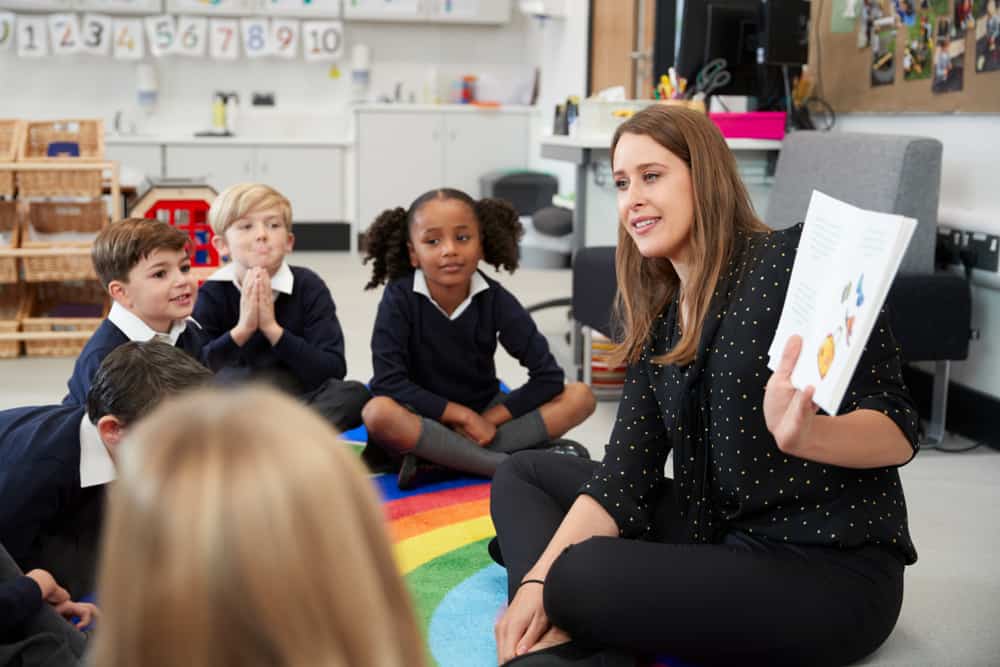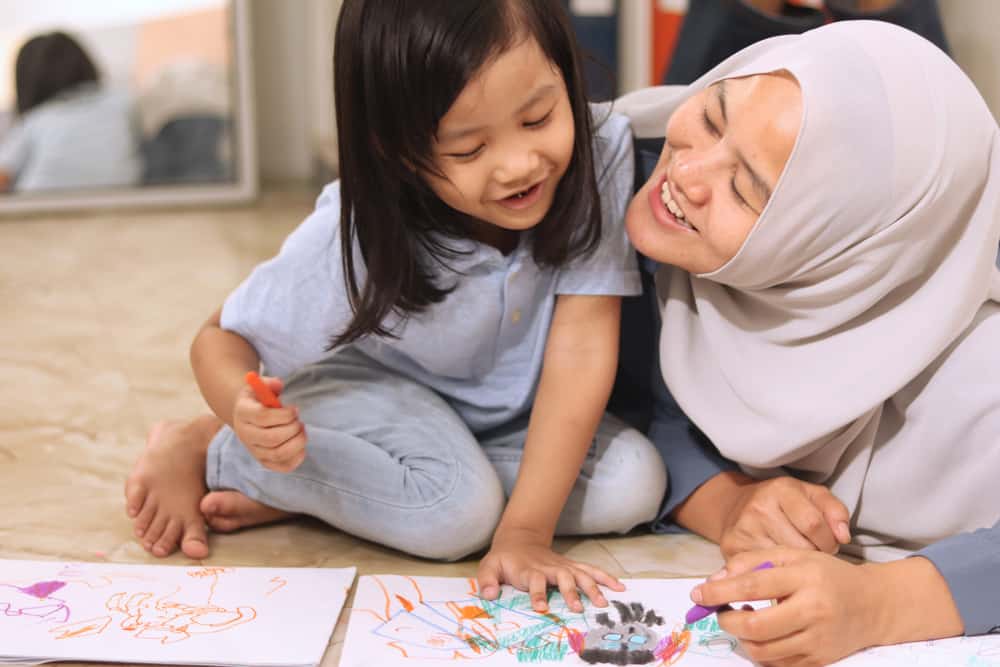Teacher Jess Gosling shares how Tapestry can support partnerships with families at an international school
by Jess Gosling on June 14
8 min read
EYFS teacher Jess Gosling has taught in schools overseas since 2009. Here Jess takes a closer look at how to support partnership with parents in international schools, and how Tapestry can be a useful tool in this context.
International schools are on the rise worldwide. ISC Research (2022) reported in mid-2022 that there were 13,180 English-medium international schools around the world, teaching 5.89 million students aged between 3 and 18. Over the past five years, the number of English-medium international schools increased in South-East Asia alone by 25 percent, from 1,528 schools in 2017 to 1,905 in 2022.
What is an International school?
Defining an international school is not straightforward. International schools may be single-sex or coeducational, include a large age range from pre-nursery to high school, or specialize in a much smaller age range, such as middle or high school. The numbers of pupils may vary from 20 to more than 3000 students, and they may follow a particular denomination or educational philosophy (Gosling, 2021). However, for this article, we will use the ISC Research definition (2022):
International Schools are privately operated and deliver a curriculum wholly or partly in English to some or all of its students aged between 3 and 18 in a country whereby English is not the official language.
Or, are privately operated and deliver a curriculum other than the host country’s national curriculum wholly or partly in English to some or all of its students aged between 3 and 18 in a country where English is an official language.
ISC Research (2022) found that the medium of learning in the classroom is often not the home language of many students attending international schools. Becoming multilingual, and in particular acquiring English, remains a primary reason to select an English-medium international school, as well as providing a pathway to global higher education.
Facilities in international schools often include excellent technological provision, which can include laptops and tablets available from pre-school to high school. The availability of technology allows back-and-forth communication between parents, teachers, and pupils. School work can be stored and accessed easily online, assessed by teachers, and shared with all.
This article will discuss how Tapestry online journals support families with children attending international schools.

Supporting Transitions
Providing early access to Tapestry for parents/relatives, before a child attends school, can support a more seamless transition for everyone.
For example, before school starts, a ‘check-in’ list can be provided using the ‘Memo’ feature on Tapestry, detailing all that is required for the new school year. An introduction to the curriculum and teacher can also be included, with an open invitation for parents to ask questions, to which the teacher can respond in a way that the answers can be shared with all families if appropriate.
Connecting parents and relatives with Tapestry can be combined with home visits, which is especially useful for the youngest children or new school children to better understand the child’s funds of knowledge (Moll et al, 1992). “Funds of Knowledge” in this context refers to the possible differences between a school and home environment. This way, a bridge between the two environments can be made, and the teacher can support the transition with familiar objects similar to home, especially useful if a child speaks the language they use with their family to indicate their preferences.
Furthermore, parents/carers can be invited to the school, both with and without their children. This early connection can build trust and understanding about the functioning of the school before their child starts. There can be more than one event, for example a ‘social’, where the whole family is invited for a picnic or similar activity, plus a meeting just for parents/carers and the teacher. The first gives the teacher the chance to meet the children and connect with them. If this event is close to when school starts, the children are likely to feel less anxious on the first day.
At these events, teachers can also make parents/carers aware that the wider family can also have access to Tapestry. The individual meeting with parents can allow for more private conversations to take place, which allows the parent to voice any concerns they may have and support the teacher in understanding the needs of their child. Teachers can ask about what helps to settle the child, as they may not initially have the language to voice their needs. Often parents/carers may also be learning English as an additional language. Schools should be mindful of potential barriers, for example providing a translator can be a good support.
Keeping families informed
School staff may themselves be able to translate communications sent via Tapestry and email into a language the family speaks at home to ensure no important messages are missed. Family members can also be shown how to use an online translator or app to quickly translate messages. It may be possible to share EAL software with families such as the ‘Learning Village’ by Across Cultures (Scott, 2023).
Information can also be shared through ‘Parent Workshops’. Teachers who lead a subject area can share their expertise with parents. This can be practical, as this emphasis often transcends language so that parents/carers can see how something is taught. In addition, a translator can also be on hand to support. It is useful to send these slides via Tapestry to allow parents to digest and translate them later if required.
Videos can also be uploaded to Tapestry, explaining certain concepts or materials used in class, such as demonstrating how to read different kinds of books with their child. These videos model how to further support a child’s learning at home, whereby a written English explanation may be difficult to understand. During home learning, this was particularly important as parents worked with their children on activities.

Partnership with parents
In the Early Years, observations can be shared easily via a photo or video, perhaps with an additional explanatory note. As a child progresses throughout the school, they can take their own photos of their work, and share it in their journal. Over time, the family can see their whole learning journey, and these images can be downloaded and kept. Their child’s journal is a valuable keepsake, sharing memories of a time when they lived in a certain place and attended a certain school.
A child’s language development can be recorded via Tapestry. Sometimes a parent is unsure if their child speaks English at school, because they are speaking the language/s they use as a family at home. Shared video or audio allows parents to see how their child is using English during tasks in the classroom. This can also include feedback on where the child could further develop. For example, if a child needs to work on developing connectives in their speech, a teacher can include this idea to encourage family members to support this at home.
To encourage collaboration and to support educators to gain a fuller picture of each child, parents/carers can also share photos and videos from home. This encourages involvement, and demonstrates the value of learning and experiences that happen at home. One idea to encourage this is for the teacher to ask for a photo about something the child did or played with at the weekend, to be used for speaking and listening.
Supporting children and families learning English as an Additional Language in this context
For children who are learning English as an Additional Language, research has shown that development of the language/s they speak with their family is paramount to becoming bi-lingual or multilingual. This can become lost within an English-medium school, where academic subjects are taught in English. Recording work on Tapestry offers a great discussion point for parents. Parents/carers not only see the work taking place (and have it explained), but can also share these images with their child, and host discussions in their home language.
The adult can provide academic vocabulary and explanations of concepts in the family’s language/s to support understanding. To further facilitate these discussions, teachers can provide a newsletter or termly topic plan which includes the academic vocabulary they will be using in class.

Wider Family Engagement
Several family members can be added to a child’s Tapestry account, supporting positive engagement for the child and their relatives. As some relatives may not live in the same country as the child, having access to their photos and experiences can help secure the bond with their child. It can become a talking point to connect families.
Bibliography
- Gosling, J. 2021, Becoming a Successful International Teacher, Gosling DLA Press, Taipei.
- ISR Research. (2022). What makes the International Schools Market Different? [White Paper] Available at: https://iscresearch.com/reports/international-school-differences/ (Accessed: 22nd January 2023)
- Moll, L. C., Amanti, C., Neff, D., & Gonzalez, N. (1992) ‘Funds of knowledge for teaching: Using a qualitative approach to connect homes and classrooms’, Theory into Practice, 31, 132-141. doi:10.1080/00405849209543534 (Accessed: January 2023)
- Scott, C. (2023) Learning Village Blended EAL vocabulary, language structure and reading program for new to English and low-level literacy learners. Available at www.learningvillage.net (Accessed 23rd January 2023).